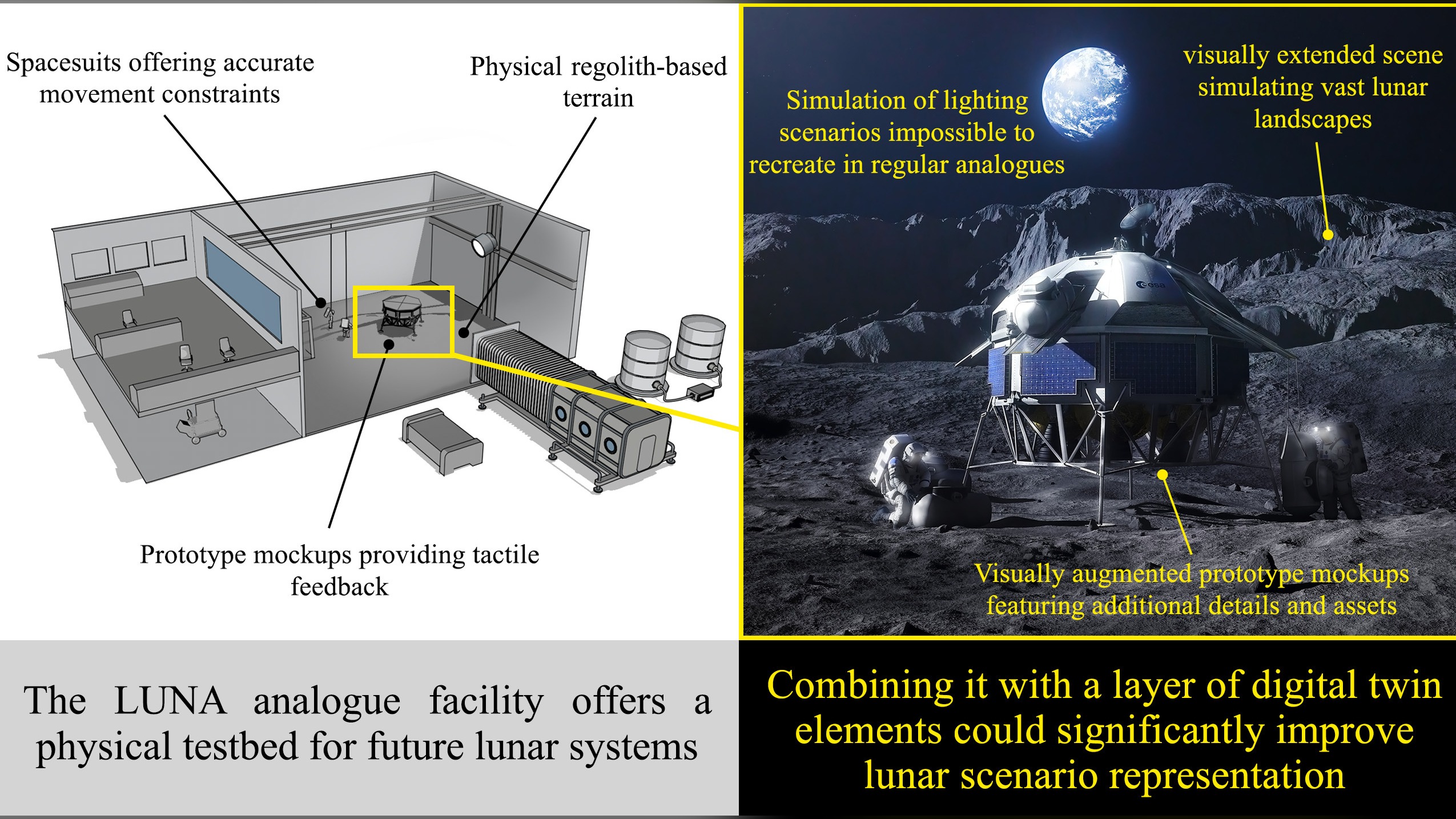Duration: 24 months
Developing new systems for future human missions on the Moon entails both operational hurdles and organizational challenges. While testbed facilities, such as the ESA-DLR LUNA analogue, allow for the deployment and study of relevant prototypes, they struggle to fully replicate key lunar conditions. Additionally, the often dispersed groups of stakeholders undertaking development activities must grapple with the challenge of coordinating their efforts while balancing engineering, scientific, and political interests. We believe that innovative use of modern graphics engines alongside state-of-the-art mixed-reality solutions will lead to novel digital twin infrastructures that address both the issue of improved lunar environment representation, as well as transorganizational collaboration, ultimately enhancing scientific, engineering, and operational engagement for preparatory exploration.
Utilizing accurate topographic 3D modeling techniques, we will produce high-fidelity digital replicas of the lunar environment. Complementing analogue facilities with mixed-reality digital twin elements will then allow us to simulate aspects of the lunar setting otherwise impossible to recreate through conventional means, such as vast achromatic landscapes, lack of atmospheric light scattering or various effects of regolith contamination in hypogravity. Similarly, by making engineering concepts and intended project outcomes available for remote review in real-time, fully virtualized digital twins will help facilitate coordination and collaboration between stakeholders across departments, organizations and countries, fostering more efficient and inclusive development processes.
Through close collaboration with our consortium of uniquely qualified industry partners, we will research, implement and pioneer novel, cost-effective digital twinning technologies and methodologies, thereby contributing valuable exploration-enabling capabilities for both ESA and the wider European space sector.

